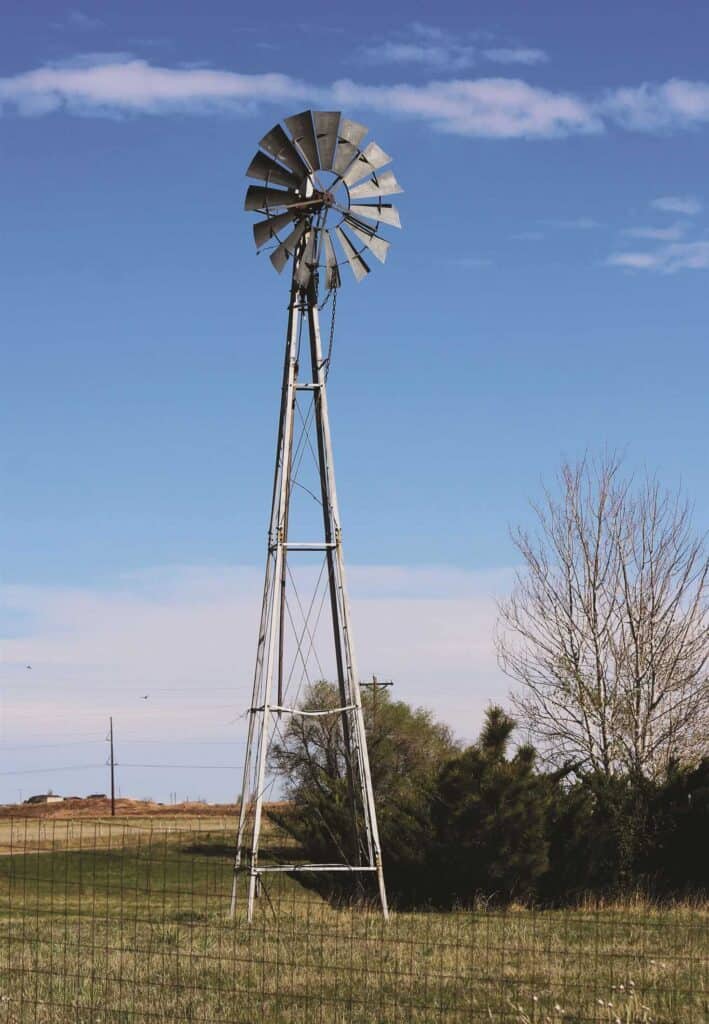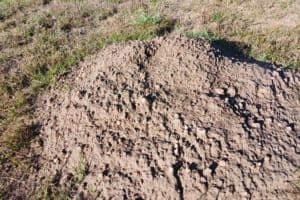Longtime local journalist Bill Radford and his wife, Margaret, live on 5 acres in the Falcon area with chickens, rabbits, dogs, cats, a flock of parakeets, goats and two horses. Contact Bill at billradford3@gmail.com.
The wind: music to my ears — or not
By Bill Radford
The answer, my friend
Is blowin’ in the wind
The answer is blowin’ in the wind. – Bob Dylan
Against the wind
I’m still runnin’ against the wind
I’m older now but still runnin’ against the wind. – Bob Seger
It’s time to formally say goodbye to spring and hello to summer.
And hopefully bid farewell to the wind as well.
When we first planned to move to our 5-acre slice of prairie more than 10 years ago, someone told me, “Gee, I hope you like the wind.”
Well, I don’t. In fact, after a blustery spring, I’m pretty sick of it. There were way too many weekends when relentless winds thwarted any outdoor plans.
“Winter and spring are definitely our windiest periods,” said Mark Wankowski, a meteorologist with the National Weather Service office in Pueblo. Winds can occur in summer, of course, often with an afternoon storm, but the sustained windy periods we see in the spring typically die down.
So what causes wind anyway? Wankowski blames — or credits — the sun.
“Wind is caused by the sun,” he said. “The sun causes differential heating across the atmosphere, across the globe; differential heating causes different atmospheric pressures.” In an effort to balance things out, air moves from high-pressure areas to low-pressure ones — thus wind. The bigger the difference between the pressures, the faster the air will move from high to lower, explains NOAA (National Oceanic and Atmospheric Administration) SciJinks. (https://scijinks.gov/)
And is the wind strongest on the prairie? Or does it just seem like it because there’s usually nothing to block it?
“Typically, we see the strongest wind gusts closest to the largest elevation change, generally just west of the interstate and adjacent to the mountains. Winds will accelerate downhill,” KOAA News 5 meteorologist Alex O’Brien said in an email.
Still, the prairie winds are nothing to sneeze at.
“In general, winds slow down with friction,” O’Brien said. “Buildings, trees and more air molecules create friction and slow down the wind. So in the plains, there is less friction to slow down the wind. It’s probably safe to assume your sustained winds are generally higher than in the middle of Colorado Springs.
“The higher you go up in the atmosphere there is less friction because the density of air molecules is lower; hence, the jet stream is near the top of the troposphere. The lower air density is part of the reason why winds are stronger in the mountains in general.”
In fact, the unofficial state record wind gust was in the mountains — 201 mph on Longs Peak in 1981, as measured at a temporary research station, the Colorado Climate Center states.
Here are some other nuggets of wind information to breeze through.
- What are the windiest states? It depends on how you measure; according to a study at worldpopulationreview.com, though, the windiest states are in the West and the Great Plains, while the Southeast states are the least windy. South Dakota heads the Top 10 list, with Colorado at No. 5. I’ve seen other lists that put Alaska or Wyoming at No. 1.
- Wind is the largest source of renewable energy in the U.S. The National Renewable Energy Laboratory states, “The first wind turbines (or windmills, as they were originally called) were made from abundant materials, such as wood or reeds, which were woven into tight blades and spun to pump water for farms, grind grain; and, eventually, power entire communities.”
And speaking of the NREL, its National Wind Technology Center is in Boulder, where “researchers work with members of the wind energy industry to advance wind power technologies that lower the cost of wind energy through research and development of state-of-the-art wind turbine designs.”
With many Coloradans living in areas that are prone to extreme winds, and the known connection between windstorms and the spread of wildfires, we should all be aware and vigilant about the risks.
The Colorado Climate Center
- The bomb cyclone of 2019 was one of the more notable wind events I’ve experienced since moving to eastern El Paso County; I remember worrying that our sliding glass door was going to blow out. A wind gust of 96 mph was recorded at the Colorado Springs Airport during the March storm.
- Will climate change have an impact on the wind? Hard to say, according to the Colorado Climate Center. “Long-term changes in extreme winds have not been extensively studied, and potential future changes are highly uncertain,” the Fort Collins-based center said in a report. But, the center cautions, “With many Coloradans living in areas that are prone to extreme winds, and the known connection between windstorms and the spread of wildfires, we should all be aware and vigilant about the risks.”
- There’s a Prairie Winds Elementary School in Monument, part of Lewis-Palmer School District 38, and another one in Pueblo West. The name of legendary musician Neil Young’s 28th studio album is “Prairie Wind.” There’s an off-white Prairie Winds paint color from Glidden.

Prairie Life windmill: This windmill in eastern El Paso County had plenty of wind to power it this spring. Photo by Bill Radford





